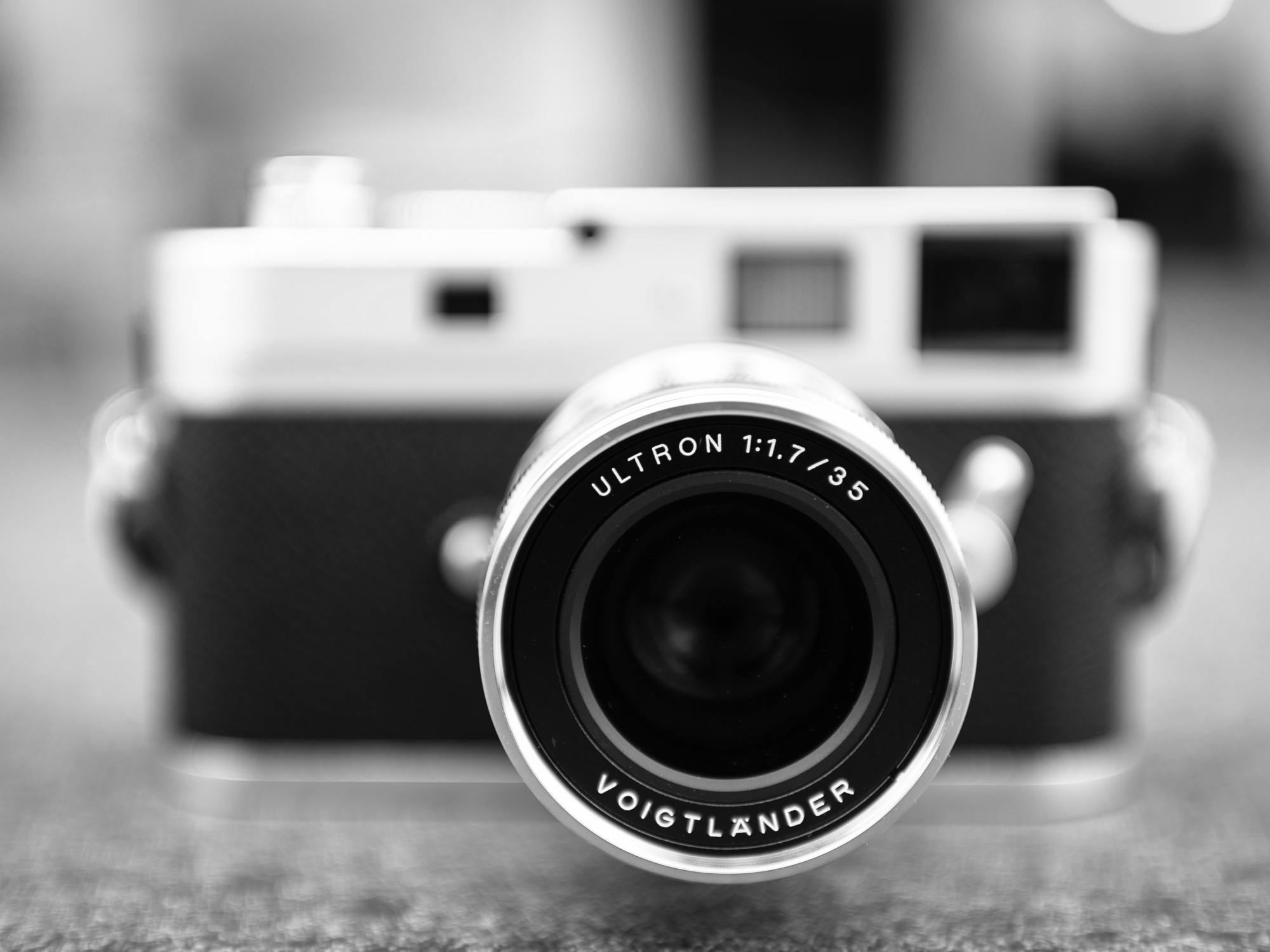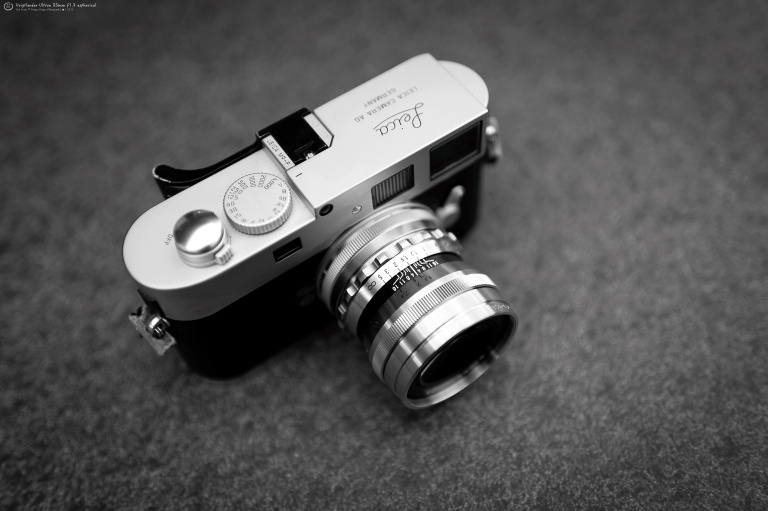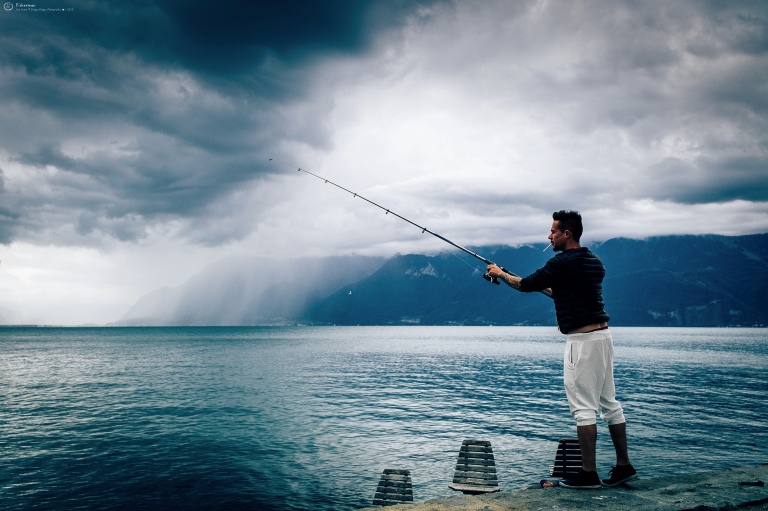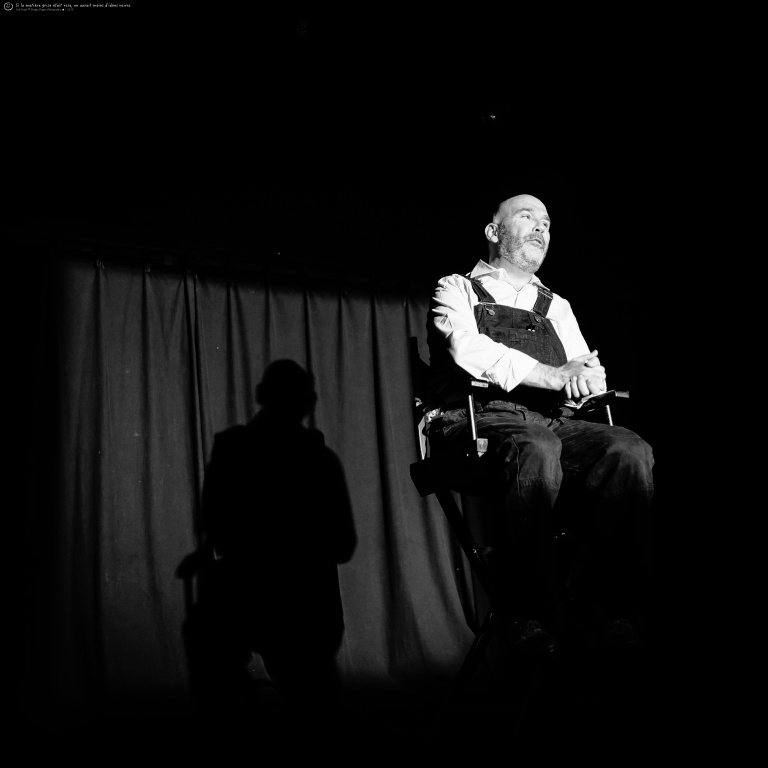Ok, I should probably try to write this article in English, even if this is not my cup of tee on this blog. This is the new Voigtlander Ultron 35mm f1.7 Asph. from the so called vintage line. The previous sentence is dedicated as usual to the search engines and you should take it on the funny side. This lens was announced last year during the 2014 Fotokina. It was probably a good surprise for a lot of M mount users, as the previous model from the Vintage Line, the Nokton 50mm f1.5 Asph is really fantastic. It’s a really solid performer and in my opinion, the Nokton is chasing one of the best lens in the world: the Leica 50mm Summilux f1.4.
So, to get back to the Ultron, I was waiting in vain for a long time without any review or tests, no news from Voigtlander. Internet was really quiet. Nothing, no words. Except maybe Tom Abrahamsson on his Flickr stream. Even the pictures of the lens were not accurate.
But, since a couple of days, it’s another story. I just checked with my « usual resaler », a little shop in Lausanne, Switzerland, near the main train station. After a couple of emails to check the price and availability, I order it. The day after at my great surprise, they wrote to tell me that the lens is here… Yep, they are great! I placed rapidly the lens on my camera just to check how it behaves. The firsts photographs I shot with it shows that it is really sharp. On the Leica M9-P, I set the same settings as the Leica Summilux 35 Asph. I need to experience it more to really see if it is the right setting.
Leica M9P & Voigtlander Ultron 35/1.7A | VSCO film
But just to talk about the lens itself. The apparent manufacturing quality is absolutely awesome, reaching the summits of the category. Similar to the Nokton 50mm f1.5 of the same vintage line. The lens is well balanced and fall naturally in my hand. I don’t want to rewrite here the specifications of the lens, as you can easily find them on the official Voigtlaender website here:
http://voigtlaender.com/35-mm-f-1%2c7-ultron.html
Leica M9P & Voigtlander Ultron 35/1.7A | VSCO film
When I bought this lens I first tried it on my beloved Leica M9. According to nowadays standards, this is an old camera and probably an old sensor. But, I don’t care and I’m somehow against the this programmed obsolescence. This camera is still able to provide wonderful results and this is the lonely important in my opinion. As I like to have sharp and blurred area in my images I usually shot wide open and this how I test a lens. All the lenses are performing well when you’re stopped down at f8, its another story when you are under f2. Usually I shot often in 35mm with the wonderful Nokton 35/f1.2. I also have a lighter version with the Zeiss Biogon 35/f2. The Zeiss is really sharp, almost as good as was my Leica Summicron 35mm/f2. These are my references on the M mount world. The new Voigtlander Ultron 35 is playing at the same level as the Cron or the Zeiss. This is a very high level of sharpness and a very pleasant bokeh. I can say that there a certain amount of vignetting wide open, but Lightroom is correcting that very easily. In fact I’m adding vignetting during the post process. It’s not worst than Nikon or Zeiss ZF lenses.
Leica M9P & Voigtlander Ultron 35/1.7A | VSCO film
On the Leica M, the results are really good too, really tac sharp. The colours are really pleasant. From my perspective this is a serious performer in M world and is miles away of performance of old Voigtlander lenses, even if I like the rendering of the classic Nokton 35mm f1.4. The lens itself is small, ø50 by 50mm long (ø2″ by 2″ long, for those reading with imperial units in mind). This really small, light years from the last lenses made for Nikon, Canon and Sony. I like Sony, they are making really great cameras, small, compact, but the lenses are so big that you can imagine something like « size matter »… : ) Anyway, with almost 300 grams, the brass chromed version is not light. This is metal and real glass inside.
Leica M9P & Voigtlander Ultron 35/1.7A | VSCO film
My comparisons points are other lenses from Voigtlander, as I own the fabulous (IMO) Nokton 35mm. I also own the Biogon 35/2 from Zeiss and I had the Summicron 35mm Asph, the latest version. When I compare them together, it’s hard to distinguish the quality or the weaknesses of the latest Voigtlander. Vignetting? Yes there’s some, wide open, but I can say almost as usual on 35mm lens. Usually I’m adding some fall off on my images, to focus on the subject. This is my way.
Leica M9P & Voigtlander Ultron 35/1.7A | VSCO film
I’ll not make the any test of bricks here, this is not my purpose, I do not have a wall of bricks in my backyard, but as far as I know, Steve Huff will do some in his excellent upcoming review of the lens. It’s useful if you shoot architecture, but as I wrote before, soon we’ll have the right correction profile in Lightroom and it will fix the problem if it exists. From the sharpness perspective, this is really impressive. The contrast is there, the micro contrast too, 3D pop also. It’s reaching the best performances of my others 35mm directly wide open, and this is a real game changer, because, at least in Europe, the prices are really cool. In Switzerland, the black version is less than 600.- CHF (about 620.- USD tax included), that’s really a bargain. It’s 4 less than the Leica Summicron, and half the price of a Zeiss ZM Biogon 35/2. A game changer as I said.
Leica M-P & Voigtlander Ultron 35/1.7A | VSCO film
I made also some tests on the Sony A7. Apparently it works good. There’s no smearing on the corners as it was the case with the Zeiss ZM 35mm Biogon f2. The image is sharp, no color fringing or shift. I took a series of image of a one man show in pretty dark conditions and it performs very well. But as the Sony A7 was not mine, it is pretty hard actually to repeat the operation. I’n not a big fan of the Sony ergonomics and the camera has one my issue in my humble opinion, is you never know when you really press the shutter. The decisive moment is not there. But the rendering is really what comes the closest to the Leica M(240). So if a Sony product manager is reading this, who knows, if you make a Sony Alpha 7000 with a full frame sensor, like this I’ll not have my nose on the back screen, if you improve the shutter lag, and make the manual focus more accurate with the Fuji X-T1 style, then it will certainly be a real game changer. End of the parenthesis.
Leica M-P & Voigtlander Ultron 35/1.7A | VSCO film
For street photography it could be cool to have in the future a 28mm of that kind. If Voigtlaender imagine to spread out the family of vintage line lenses, it could be really interesting. And why not the 75mm? This could be a really cool set of lenses and really a game changer.

Leica M-P & Voigtlander Ultron 35/1.7A | VSCO film
The image quality is so good that it changes the old perception of this brand. The 50mm Nokton and this new 35mm Ultron are impressive in every aspects and are really coming as first choices when chasing image quality and natural rendering. The build quality is awesome, lightyears of all plastic lenses from some others manufacturers. It’s really made for long life time. This is also something I like, it is not obsolete after a couple of years. Thank you Kobayashi San, this is a great product. A great product line.
Sony A7 & Voigtlander Ultron 35/1.7A | VSCO film
I always have been surprised when talking about Voigtlaender, that it was always the third choice in quality or in image quality. Now, I’m not sure that it is still the case. If you are choosing this lenses or the Nokton 50mm instead of an Zeiss ZM or of a Leica, you’ll not have lower quality. Today they are at least as good. If in the future we have 120 MPX sensors, then it will be different. But with a 10, 18 or 24 MPX this lens shines. Apparently, the behaviour on a 42MPX sensor is pretty impressive. But this is not for me. This lens has a modern rendering, it must be also interesting to test it on film. I’ll try that soon I hope.
Leica M-P & Voigtlander Ultron 35/1.7A | VSCO film
I have and update with the Sony A7S and the Voigt 35 Ultron here:
https://lepetitphotoblog.wordpress.com/2015/11/08/sony-a7s-and-the-voigtlaender-ultron-35mm-f1-7-vm/











Thanks for the review and the translation in english ! Really great ! Hope i have soon, both the leica m and the lense 😉
The lens is really fantastic, really amazing. It’s really close the best I know, the Summicron 35. Thanks’ Dragn for visiting my blog. Hope you’ll fullfil your dreams soon. Cheers.
Lovely images – and I completely agree with your review. I now own the 35mm Ultron and use it on the Sony A7R II. Fantastic colors, bokeh, micro contrast and 3d pop. My favorite lens on this camera so far. PS: The shutter on the A7RII is fantastic, and so is the camera, although not as small and cleanly designed as the Leicas.
I just found a second hand Sony A7S. It’s exactly what I needed with as smaller MPx count and a versatility with M mount lenses that is really great. In addition I found the VM close focus adapter, and this one is a no brainer, a fantastic addition for the Sony A7 series. Closer focus than the regular 0.7m is really great. Thanks for the visit and your comment, it’s really appreciated. Cheers.
great read, thank you
How does it compare with the same 35mm 1.7 Ultron with screw mount? Same except the bayonet?
Honnestly I don’t know, I haven’t owned the old LTM 35 F1.7. What I can say is compared to the Leica Summicron or the Zeiss Biogon 35, it’s really close and in the same mood. It’s sharp and it has a wonderful bokeh. I know that the old 35 LTM was looked for its classic rendering and its wonderful bokeh. The new one seems to be more trendy and more perfectly corrected.
Thanks
Thank you for the review, I am amazed at the quality of this lens and it is for sure on my short list of lenses to get now.
Thanks for the review. How does it compare with the Voigtlander 35mm 1.2 ?
The 1.2 is real good lens. At 1.4 you have a stunning quality. On Leica body, I haven’t seen any differences from a sharpness stand point. On Sony, it’s not as simple to distinguish a winner. Other parameters are coming into the equation. The 1.2 is heavier, bigger. It’s also more expensive in the USA. In Europe, there’s a big difference between the two lenses. The 1.2 is quiet two times more expensive. You can check on toppreise.ch. you’ll see the difference. In the US. It’s obviously more complicated. But to be perfectly honest, the tow lenses are very good. I don’t care about the quality. I just care about the weight and aperture. Il dark condition, I have a full stop on the 1.2. But it’s a non issue with modern camera. On film, you can think seriously about it. Hope this will help you. Cheers.
Thank you so much
De nada, mi placer… : )
Bonjour,
Cet objectif pourrait m’intéresser pour mon Leica M4 mais je voulais vous demander comment un Leica réagissait entre 0,5 et 0,7m. L’absence de couplage dans cette gamme de distance est-elle gênante ?
Merci 🙂
Ben en fait, il ne réagi pas. À partir de 0,7 m le télémètre est débraillé et il ne bouge plus. C’est pareil sur les Zeiss avec un Zeiss Ikon. Gênant, oui ça l’est parfois. Mais c’est aussi une question d’habitude.
Bonsoir,
Petite question, est-ce que vous recommandez la bague Fuji uniquement pour les obj Leica sur XPRO1 ou d’autres marques meilleur marché ? merci
Personnellement je possède la bague Fuji originale, une bague Kipon et une bague achetée sur eBay chez Rainbowimaging à New-York pour 12 $. La bague Fuji est limitée à cause de la place que prend sont électronique. On ne peut pas monter tous les objectifs en monture M. Avec la Kipon, cette limitation n’existe pas. Il est possible de monter par exemple l’excellent 35mm Nokton f1.2 de Voigtlaender. La bague bon marché joue aussi, mais il y a parfois du jeu. Il y a aussi les Novoflex de fabrication allemande que je connais et qui sont très bonnes, mais avec un prix en conséquence. Mon conseil, une bague Fuji, pour les informations et une bague bon marché pour les autres occasions où il y a des problèmes de compatibilités.
Merci :-).
J’ai encore une question, L’objectif gène-t-il la visée ?
Nicolas
Le viseur du M3 est particulier en terme de grossissement, sauf erreur de ma part. Sur M9, la gêne n’est pas plus importante qu’avec un Zeiss Biogon 35 f2. Mais sans pare-soleil.
Bonjour,
Avez vous testé le summicron sur le Sony a7? Même question pour le summilux 50 mm.
Les voigtlander semblent être des alternatives idéales. Merci à vous.
Bonjour, merci de votre visite… Je n’ai apparemment pas testé le Sony A7 avec le Cron. En toutes vraisemblances, je l’ai vendu avant. Voici un de mes album où je collectais mes photos avec le Sony A7. Maintenant, je travaille avec le modèle A7S Mk1.
https://www.flickr.com/photos/the-itch/albums/72157638754303094/with/11113289766/
Pour le Summilux 50, en toute honnêteté, c’est un mythe, une légende, un des 3 meilleurs objectifs au monde. Avec le Sony, il se comporte vraiment bien. Maintenant, les Voigtlaender Nokton 35 et 50 sont vraiment intéressants. Une qualité vraiment supérieure. Un bokeh et des couleurs vraiment très belle. Le piqué au fil du rasoir. Juste là où il faut. A mon sens ils valent vraiment le détour. Une marque trop décriée par des snobs sur le net comme Ken R. Bellamy Hunt, Japan Camera Hunter place le 50 f1.5 dans sont top 10. Moi, je les adorent simplement. J’ai eu ou je possède encore 4 35mm de chez Voigt. Le Color Skopar est celui qui n’est pas resté. Mais ce n’est qu’une question de temps pour le retrouver. Les Ultron et Nokton’s sont très intéressants et on chacun un rendu bien particulier. J’adore tout simplement.
Bravo pour ces tests de qualité, appuyés par de superbes clichés. … qui m’ont aidé à me diriger d’abord sur le Nokton 50mm f1.5, puis le Ultron 35mm f1.7. Le tout sur un M240, je suis aux anges.. maintenant s’ils pouvaient sortir un 90mm f2.0 dans la meme lignée, youpi. Bravo. Encore.
Thank you for the great feature/ review!
May I ask how you would compare vignetting on the M9-P compared to your Sony A7S?
On a similar note, how would you compare both bodies with the CV 35 on field curvature?
Thank you once again for the outstanding review!
Ciao Dino, e un piacere. About the field curvature, the M9 sensor is really made for M lenses, The micro lenses on each photosite are placed to improve the light rays entering the CCD sensor. On the Sony A7S, it’s slightly better than other A7 cameras, due to the big size of the pixels. But anyway, the sony sensor has a huge stack of glass on the top it. This has an impact on field curvature. But to be perfectly honest, rare are cases where you face that problem. With short to mid distance, no worries. Almost infinite with wide aperture, yes, you can experience it. Both bodies are great. The A7S for night low light shots and the M9P at base ISO 160. Thank you for visit.
Ciao Dino, e un piaccere.
About vignettiste on the ultron, yes there’s some wide open. More on the A7, due certainly to the huge stack of glass on the sensor. Less visible on Leica, actually M-P. The field curvature, not seen on Leica on the kind of photograph I’m producing. On the A7s, you should have the best behavior of all due to the huge pixel size. But obviously, as Sony is stacking a ton of glasses on the sensor, this must be theoretically visible. Steve huff has shown that on his article. The M9 has a thin glass on the sensor and micro lentils with a spread disposition to ensure that the light rays are entering perpendicularly to the photosites. This is why you will have more chromatic aberration on the A7s. By the way I really like this A7s. I think today the version II is a must have. Cheers